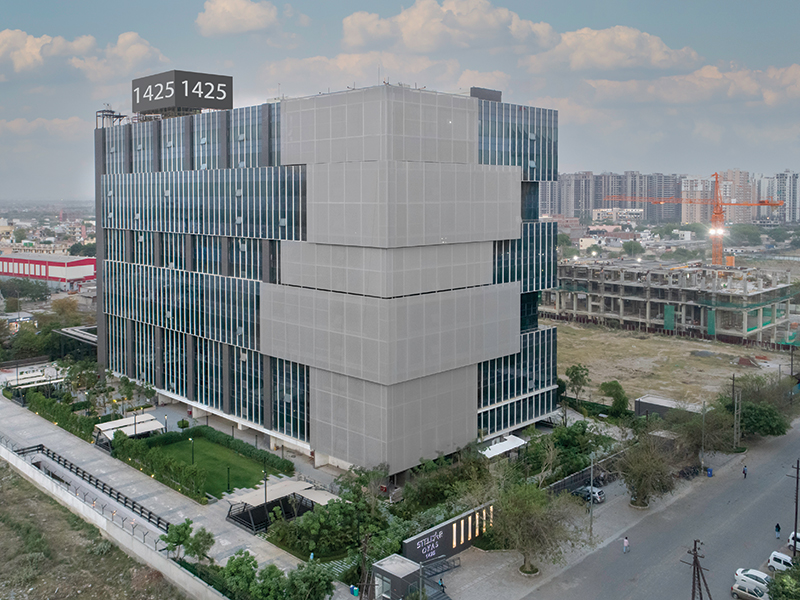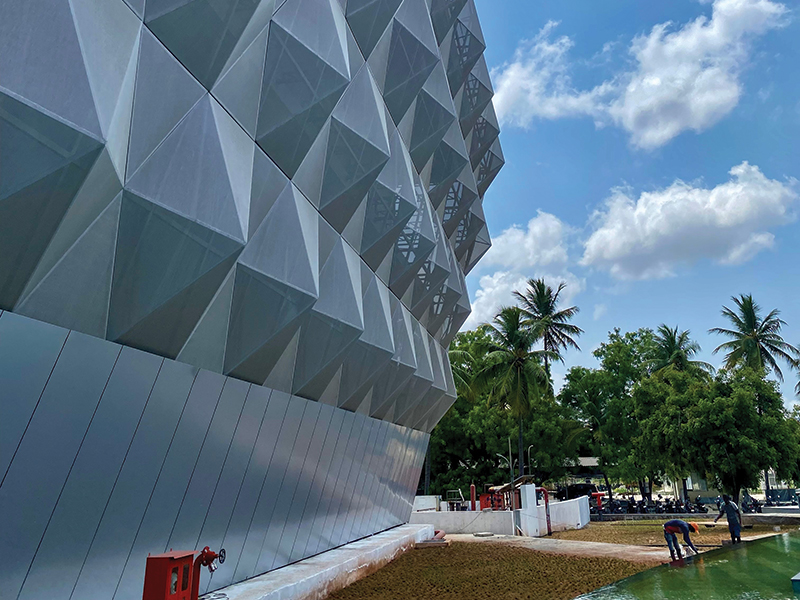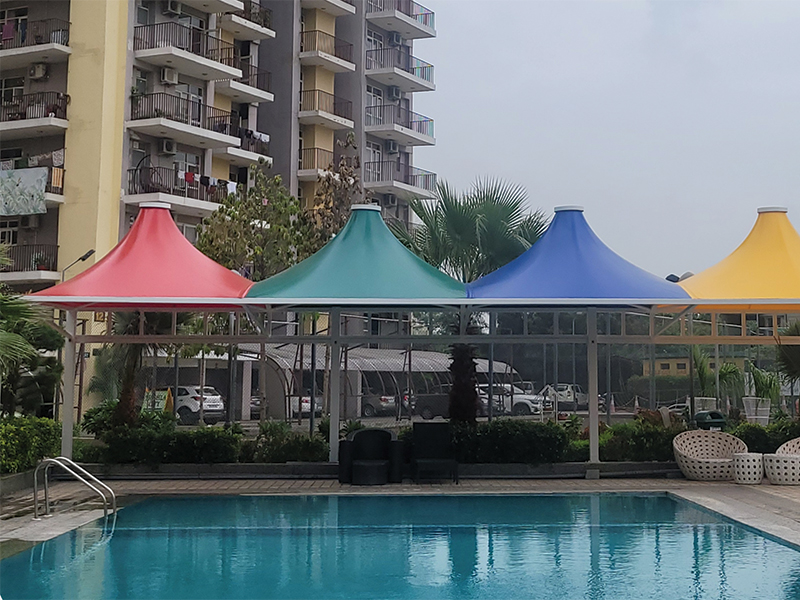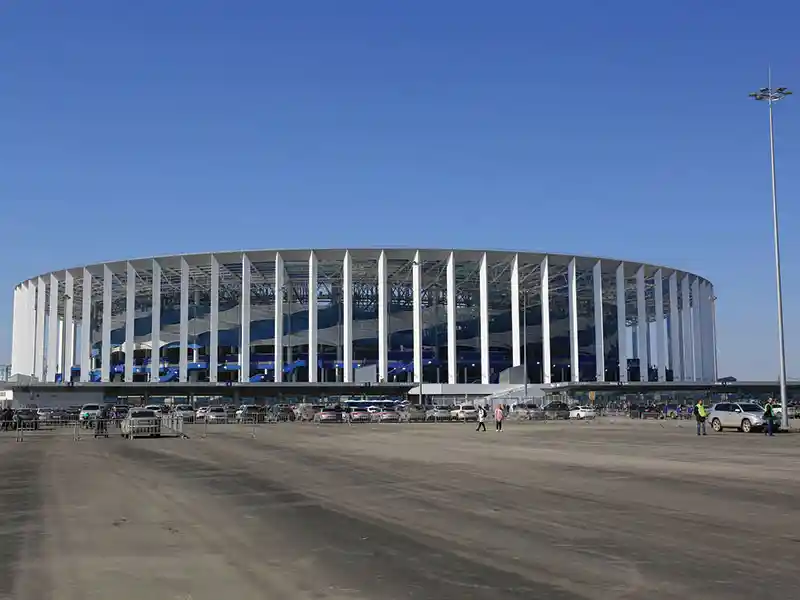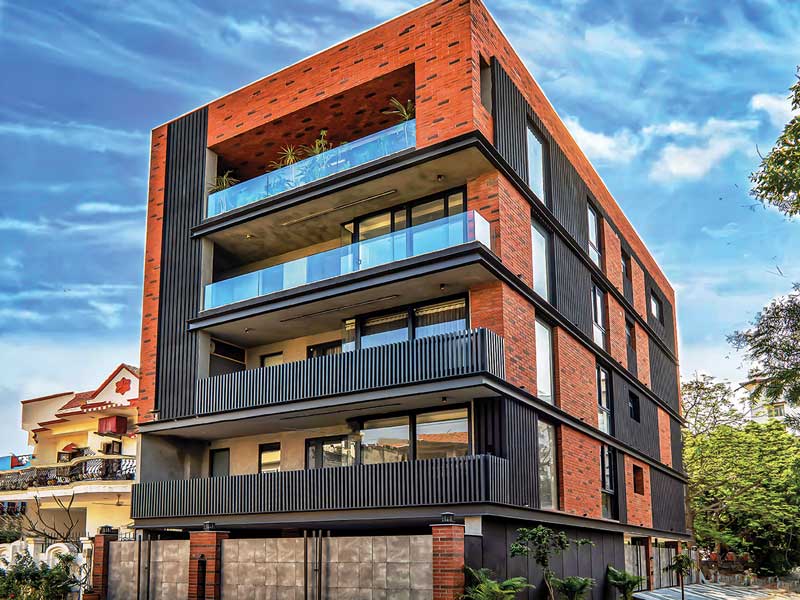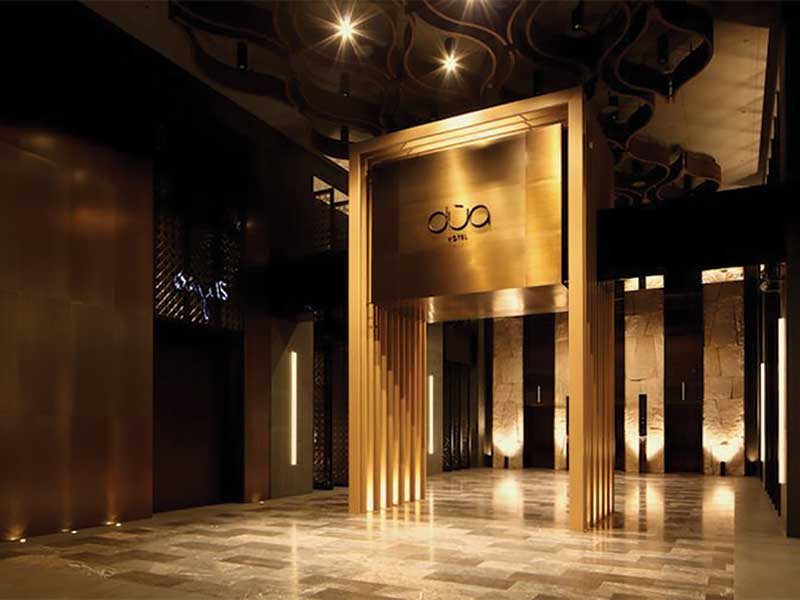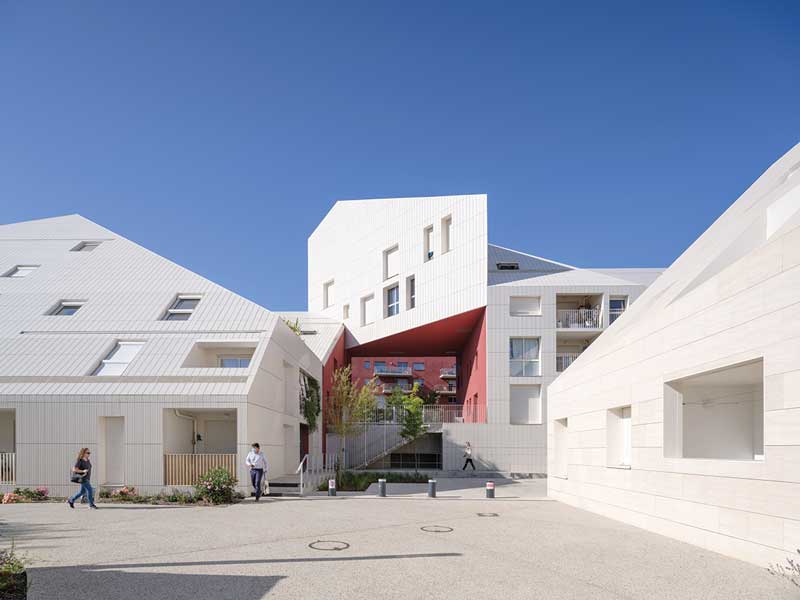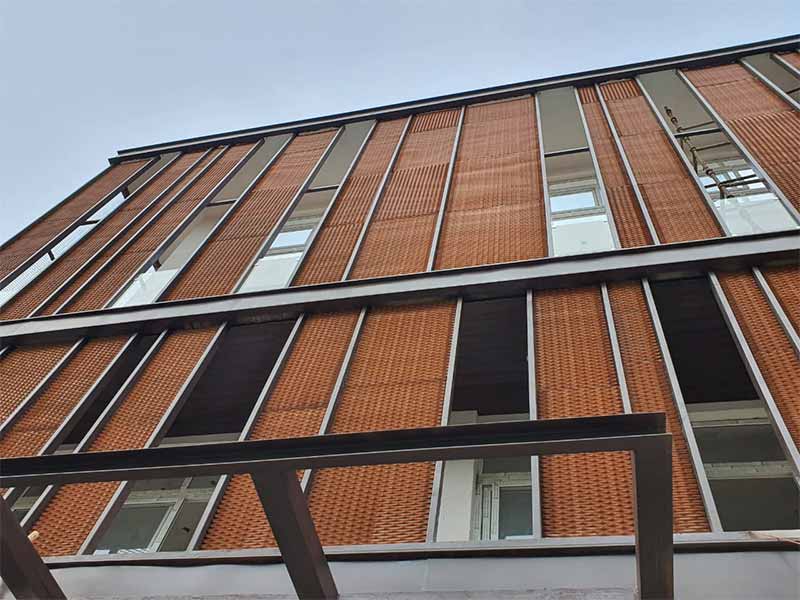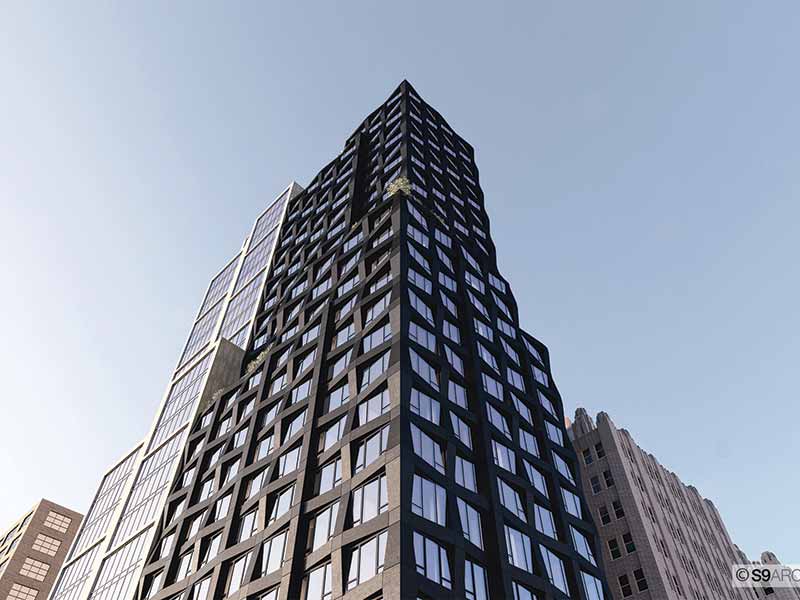
Rain screen cladding offers a relatively simple solution to the problem of keeping rainwater out of buildings, writes Bhaswati Das.
It is a common premise of modern engineering that it is far more beneficial to work with nature than try to resist its influences. However, the traditional solution of keeping rainwater out of buildings has been to use the latter concept and provide walls that are fully sealed against the weather by the use of barriers, joints and sealants. Unfortunately, the failure of such walls due to material degradation, poor workmanship and unexpected building movements has been far too common an occurrence. Rain screen overcladding offers a solution that utilizes the effects of the wind to control rainwater and prevent it from entering the building.
The essentials of a rain screen system are to allow the ingress of air at the base of the system and the egress of air at the top of the system. This ventilated cavity allows any water that penetrates the panel joints to be partly removed by the 'stack effect' and partly removed by running down the rear face of the panels and out of the base.
Success many times over
The modern concept of rain screen cladding was developed in Scandinavia during the 1940's and came into widespread use in Europe and Canada in the 1970's. Lightweight rain screens were developed in the UK in the 1980's with the majority of the earlier projects located in the harsh climatic conditions of Scotland. It is not a new concept and many years of experience have been gained in the development of the relatively easily installed lightweight systems currently available.Principal Concepts
The concept of over cladding is simple, but to be successful it is essential that a detailed knowledge of the physical principles and materials involved be incorporated into the design. The principal concepts are:- The careful design of ventilated cavities that use the pressure effects of the wind to dissipate energy of driven rainwater
- Properly designed drainage paths that collect and direct the water away from the cavity
The rain screen approach is based upon two separate and distinct barriers on the exterior building wall. A rain screen system consists of an outer panel, a ventilated cavity and an inner leaf. In driving rain conditions moisture forms a membrane across the baffled vertical and horizontal joints. The majority of water is deflected off the outside face—any penetrating water is disposed of through drainage. The outer leaf sheds and controls the majority of the rainwater, while the inner leaf performs the multiple functions of final moisture barrier, air vapor barrier, insulation and building structural wall. The outer leaf allows penetration through open joinery. The volume of the penetrating water will vary dependent upon the design principle.
Rain screen systems differ from brick wall sealed construction as the beneficial effects to air movement are utilized. A rain screen system is pressure equalized—the joints are open or lightly baffled, allowing pressure equalization in driving rain conditions to be instantaneous. Pressure inside the cavity is equal to pressure outside—ie, precipitation has no inclination to be driven into cavity.
Advantages Galore
Installation is simple, allowing external cladding and internal works to proceed speedily, early and consecutively. Problems of deterioration are halted with minimal additional load being applied to the existing structure. Rejuvenation of external appearance is a distinct advantage in an age where looks are everything, even for buildings. Aesthetic colors can be added, and with better flexibility, the shape of external facade may be dramatically altered. Energy saving is another good feature. Rain screens can mean lower running costs due to greatly improved thermal insulation. There is reduced risk of condensation due to the elimination of cold bridges and the panels can easily be removed for monitoring of structure.Because of these advantages, it has wide scale applications in wall cladding and facade finishes, spandrel panels, fascias, column covers, balcony and canopy cladding, tunnel linings, stairways, lifts, roof edgings and parapet wall copings.
Disadvantages
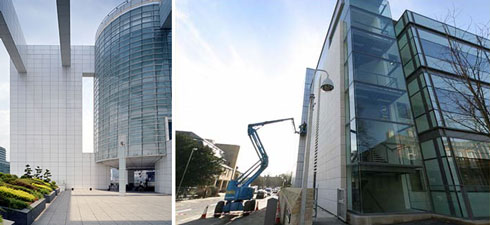
It should be well understood by the design and construction professionals that specifications and contracting methods need to be closely coordinated and controlled to assure satisfactory performance of the integral system.
Typical Construction
Rain screen systems comprise outer cladding panels that are bolted to a supporting framework of rails, which are supported by cleats fixed back to the building frame. A layer of insulation is fixed independently against the building substructure using proprietary insulation fasteners. The insulation should be close butted and fixed independently against the building substructure using proprietary insulation fasteners in accordance with the design specification. Once the insulation is firmly in place the application of the over cladding can proceed. Ensure that a ventilated cavity remains between the insulation and the external cladding. The dimensions of the ventilated cavity should not exceed the limits in the building regulations.The systems are attached over, and spaced away from, the external face of the existing façade. As the name suggests, the system provides the building with a degree of weather screening from the prevailing elements. Rain screen systems allow the façade to breathe and enable the introduction of additional insulation within the newly formed cavity. This system will improve the thermal performance of the façade and reduce the ingress of water through permeable construction methods. It will also enable the building to be visually transformed by the use of flat panels manufactured from pre-finished steel.
Types of Cladding
Ceramic Cladding
Ceramic cladding in the form of vitrified porcelain units mounted within a rear-ventilated, rain screen facade creates a unique and effective external walling solution, suitable for use with all types of building construction.Architectural Ceramics offer a wide range of large-format tiles suitable for use as external cladding. These combine the beauty and durability of a natural material with a versatile and effective rain screen system.
Terracotta Cladding
Terracotta rain screens are manufactured under the 'Argeton' process.Argeton facades are an innovative concept for the use of terracotta tiles in a rain screen. The system utilizes the proven principle of the ventilated cavity, creating a condensation free and thermally efficient cladding whose components are suited to modern architecture. The natural beauty and symmetry of the Argeton format lies in the precise and clean lines achieved without overlapping, the traditional method of protecting a tile façade against water ingress. The profile of the tile minimizes water penetration and is tested to CWCT standards.
The contrast of the joint and the smooth tile enhance the aesthetic effect of the façade and maintain a traditional whilst modern theme. Argeton can be created into a modular format with powder coated aluminum sections used as features and the use of variable joint profiles can replicate large plank effects. Modular features can facilitate fire stopping measures where regulations so require. The Argeton terracotta façade can be installed in both refurbishment and new construction. Structural deviations are readily overcome by the aluminum support system recommended. Traditional backgrounds of block work or concrete are suitable for support of the Argeton system. Thermal bridging between the cleat and the structure is prevented by the use of a thermal separator. Light–weight steel walling can be designed to accommodate the Argeton system where re-modeling of the existing structure is proposed.
Solar Cladding
Solar photovoltaic (PV) can be used as conventional rain screen cladding panels with the unique design advantage that they generate power from otherwise redundant spaces. PV panels offer a seriously competitive alternative to conventional cladding materials, providing similar aesthetics to marble and bronze at a fraction of the cost. Using photovoltaic as rain screen cladding is a tried and tested solution; panels are either pre-assembled and hoisted into position on a frame, or hung and secured individually on smaller applications.Solar cladding is a unique product when compared to common cladding materials, which rapidly repays the energy consumed during manufacture. From the moment the system is commissioned solar cladding transforms a building into a clean, distributed power station. They are cost effective. Photovoltaic (PV) cladding panels are cheaper than many commonly used high quality cladding materials. They off–set building costs. Using PV panels in place of conventional cladding materials helps off–set costs for micro generation, since some form of cladding material would have been specified from the outset. Solar cladding provides clean energy as a by-product of the building façade. They come in a variety of shapes and colors to help create stunning buildings interconnection. Solar facades create striking buildings, which highlight environmental commitments. Power output from the modules is guaranteed for 25 years.

